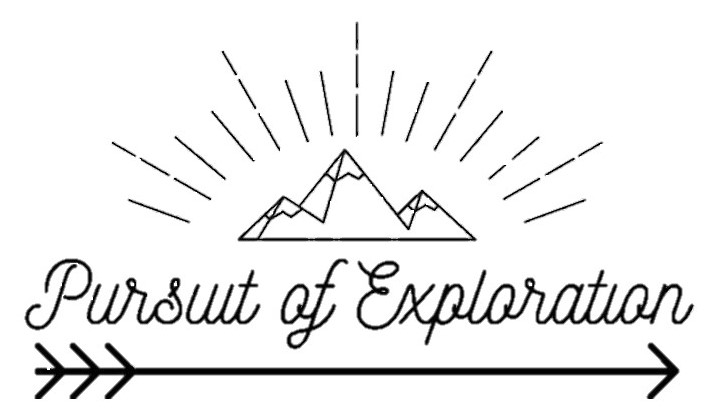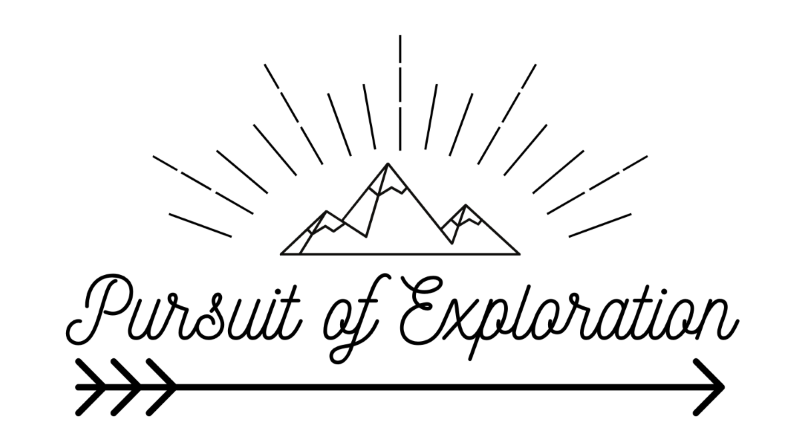Hundreds of elephants dead in Botswana…the culprit? Cyanobacteria [1]. These elephants aren’t the first account of a mass murder at the hands of these toxin-producing bacteria. In 1979, 148 people became very sick on Australia’s Palm Island from unknowingly drinking toxin-contaminated waters [2, 3], and in 1996, 76 people died in Brazil from exposure to cyano-toxins during dialysis treatment [4]. There are numerous other cases in which humans or animals have fallen prey to cyanobacteria’s dangerous toxins. It even affects each of our lives in a minor way, as many beaches close every summer as a result of unsafe levels of cyano-toxins.
What are cyanobacteria?
Cyanobacteria are often referred to as blue-green algae, which can be a bit misleading since they’re in fact bacteria, not algae. However, cyanobacteria are similar to algae, in the sense that they both produce energy from light through a process called photosynthesis. Cyanobacteria were actually the first inventors of that process, about 3.5 billion years ago, and we owe them a big thanks for turning Earth’s atmosphere into a habitable oxygen-rich environment for us and many other animals [5].
The plant-like bacteria that produce oxygen may sound harmless but they’re in fact more widespread and problematic than you think. When cyanobacteria proliferate in water, they form what are called “blooms”, also termed Harmful Algal Blooms (HABs), and these are dangerous because they promote the production of toxins. These toxins can be: dermatoxins, hepatotoxins, or even neurotoxins [6, 7]. In other words, when exposed to these toxins in water, it can cause a skin rash, or when ingested, it can harm the liver, or the nervous system [8].
Cyanobacterial blooms are a frequent occurrence during the summer, causing many beaches to close as a result. The familiar “No Swimming” signs are posted around premises, aggravating many avid beach go-ers. This past summer alone saw the closure of countless beaches [9, 10, 11, 12]. Unfortunately, this phenomenon is becoming increasingly common as annual summer temperatures continue to rise as a result of climate change [2].
In addition to warm water temperature, cyanobacteria love nutrients, especially phosphorous and nitrogen [13, 6]. Unfortunately, so do crops, such as corn and soybeans. When these nutrients are applied to fields, they sometimes make their way into nearby waterways before the intended crops get a chance to fully soak them up. Once in the water, these nutrients become food for cyanobacteria, which then multiply to form toxic blooms.
The toxins however, aren’t the only problem associated with blooms. Blooms block essential sunlight from reaching other aquatic plants, preventing them from being able to grow. The eventual decomposition of the bloom material also removes a lot of oxygen from the water, which can result in the death of many fish and other aquatic animals [2]. Therefore, it’s very problematic when blooms occur in areas of high marine or aquatic biodiversity, or areas that serve as important sources of drinking water.
Research in Germany
After the 3rd year of my undergraduate degree, I spent the summer in Germany as a participant of the Ontario Baden-Württemberg Summer Research Program [14]. During this time, I worked alongside a PhD student to take a closer look at cyanobacteria and their potential harm in water reservoirs.
My research internship was at the University of Konstanz in southern Germany. It’s a beautiful region, with everything you could ever want from an experience in Europe. The surrounding hills are adorned with vineyards, the Konstanz town-center is teeming with history, and to top if all off, it’s right on the shores of Lake Konstanz, a big lake shared by Germany, Austria, and Switzerland. Its waters are a constant hew of beautiful blue, enticing the unexpected observer to jump in for a swim. At any time of day you could look out to the lake and see sailboats of all kinds basking under the sun, or speedboats zooming by. If it’s windy, you’ll even see people trying their hand at windsurfing.
I spent most of my summer in a lab at the University of Konstanz, with the occasional opportunity to venture out for field work (the term used for collecting samples in nature). When I first arrived, the campus layout seemed to have no logical order. As a newcomer, it was very confusing, and I definitely felt out of my element. But the members of the Human and Environmental Toxicology group that I worked with were very welcoming, and in no time campus felt like home. The lab I worked in was a great place, it had windows that stretched the length of the wall with a view towards none other than the Lake Konstanz. Each student also had their own lab bench with their own set of pipettes- any young scientist’s dream!
I was fortunate that I also got to spend a portion of time at the University’s Limnology Institute which was situated down by the lake, less than a 15 min walk from campus. The Institute is an absolute wonderland! It has several research boats docked in-behind the building, there are numerous pools for mesocosm experiments (controlled experiments done under natural environmental conditions), and within the building there are many different fish tanks, as well as tanks that just contain Daphnia (also known as water fleas) for ecotoxicology experiments.
Field work
Every now and then I would venture to a water reservoir in Germany’s Schwarzwald region with the PhD student I was helping. We went there to collect samples in order to investigate what the status of cyanobacteria in the water reservoir was and to determine whether any toxins were being produced.
To get there, we drove down narrow, winding roads, that wove along forested hills and through many quaint villages. It was a beautiful drive, albeit a little worrisome at times due to the limited width of the road and the sheer size of our vehicle. We drove a big van that contained all of our research gear, and towed a small boat on a trailer.
Upon arrival, we would place our boat into the water and fasten our small electric outboard motor. Then we would pile our gear into the boat and off we went. The reservoir was nestled at the base of forested hills, it was similar to a lake, although a massive concrete wall at one end of the reservoir betrayed the notion of it being a natural lake.
We would spend the day taking samples and recording data from several stationed buoys dispersed throughout the reservoir. We would also collect water from several inflow sites that we would later filter. Usually the extensive motoring around the reservoir would take a toll on our battery-powered motor. Near the end of the day, our speed would be reduced to a crawling pace, leaving us in suspense as to whether we would make it back to our launch site before it gave out.
We would usually come rolling into the quite town of Forbach just before sunset. After dinner, we would take over the garage of the guesthouse where we would spend the night before driving back to Konstanz the following day. In the garage, we would set up a water filtration system which required a loud pump- the surrounding neighbours were far from pleased about this. The pump sucked the water we had collected earlier in the day through filters. These filters would capture anything that was in the water, allowing us to collect any potential cyanobacteria that could be present.


Lab work
In order to determine whether toxin-producing cyanobacteria are present in the reservoir, we need to analyze the samples that had been collected. DNA is the blueprint of an organism, in other words the genetic code that uniquely identifies a species. So, by extracting the genetic material from samples and visualizing it, we can determine whether that organism is present and whether they are producing toxins.

In order to extract DNA from a sample, a series of dilutions and extractions need to be completed. Basically, some solutions are added to a sample, which are then mixed together and placed into a centrifuge. The centrifuge is a device that spins a sample very fast, so that anything remotely heavy will separate towards the bottom of the sample vial, and anything relatively lighter will remain near the top. The heavier portion is called the substrate, and the lighter portion is called the supernatant. One of these portions are extracted with a pipette and added to a new vial where it is then mixed with other solutions. The mixing and extraction processes are repeated, eventually producing a solution that contains the DNA of the sample. DNA is useless unless you know what genetic material it contains. So, in order to obtain material that we can “see”, we do what’s called PCR, which stands for Polymerase Chain Reaction. It sounds complicated, but it’s basically a microscopic photocopier machine, that makes millions of copies of the DNA.

Once we have obtained our many copies of DNA, we do what’s called gel electrophoresis, which allows us to “see” the genetic material. Genetic material comes in all kinds of different sizes. These sizes are measured in units of base pairs (bp), think of millimeters, but way, way smaller. Since different genes have distinct sizes, we can separate genes based on their size. DNA has an overall negative charge, so it’s possible for us to separate different sizes of DNA with an electrical charge. The DNA is placed into a gel (think of Jello but a little thicker). The gel is submersed in liquid within a plastic box. An electric current is then applied to the gel. Since negative charges are attracted to positive charges, the genetic material will travel through the gel, towards the positive charge. The bigger genetic material has a harder time travelling through the gel, so it won’t travel very far over the time that the electric charge is applied. The smaller genetic material, however, can move through the gel with more ease, therefore travelling further. In the gel, the distances of the genes from our DNA sample are compared to distance of known genes, so that we can determine whether a particular gene is present in our DNA sample.

Parting thoughts
And so, my summer was spent extracting DNA and travelling to the reservoir, meanwhile exploring Konstanz and the surrounding area. Any time spent abroad is an enriching experience, especially when there’s an added value of research. Research internships are a great way to learn about how science is conducted in another country, and to make valuable connections. As a young scientist, it’s important to be exposed to different scientific disciplines so that you can figure out what you truly like doing, and you become more adaptable and open-minded in the process. I learnt many new research techniques and methods, and experienced field work for the first time. I started as a timid young scientist scared of doing things in the fear that I’d make mistakes. But making mistakes is how to learn and improve. This experience taught me to be a quick learner and have more confidence in my abilities.
Why should we care?
Toxic cyanobacterial blooms are becoming more prevalent. As climate change continues to increase Earth’s global temperature, the frequency and severity of cyanobacterial blooms increases as well. Freshwater is finite and a precious resource, because without it, we can’t exist. Only 2.5% of water on Earth is in the form of freshwater, and most of it is in the form of glaciers or groundwater, so in actuality, only 0.007% of water is available to us as lakes or rivers [15]. It is therefore pertinent that we protect our freshwater resources and investigate the role of cyanobacteria, as it poses an increasing health threat to us and many other organisms that share our need for water.

References
[1] https://www.bbc.com/news/world-africa-54234396
[2] https://science.sciencemag.org/content/320/5872/57
[3] https://pubmed.ncbi.nlm.nih.gov/12635096/
[4] https://www.ncbi.nlm.nih.gov/pmc/articles/PMC1240368/
[5] https://pubmed.ncbi.nlm.nih.gov/23314096/
[6] https://www.springer.com/gp/book/9781402030093
[7] https://www.tandfonline.com/doi/abs/10.1080/20018091095087
[10] https://thebrockvoice.com/2020/08/18/kinsmen-beach-on-lake-scugog-closed-due-to-blue-green-algae/
[13] https://pubs.acs.org/doi/10.1021/acs.est.6b02575
[14] https://obw.ouinternational.ca/obw-summer-research-program


